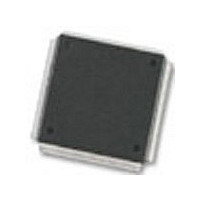MC68376BAMFT20 Freescale Semiconductor, MC68376BAMFT20 Datasheet - Page 90

MC68376BAMFT20
Manufacturer Part Number
MC68376BAMFT20
Description
Manufacturer
Freescale Semiconductor
Datasheet
1.MC68376BAMFT20.pdf
(434 pages)
Specifications of MC68376BAMFT20
Cpu Family
68K/M683xx
Device Core
ColdFire
Device Core Size
32b
Frequency (max)
20MHz
Interface Type
QSPI/SCI
Program Memory Type
ROM
Program Memory Size
8KB
Total Internal Ram Size
7.5KB
# I/os (max)
18
Number Of Timers - General Purpose
2
Operating Supply Voltage (typ)
5V
Operating Supply Voltage (max)
5.25V
Operating Supply Voltage (min)
4.75V
On-chip Adc
16-chx10-bit
Instruction Set Architecture
RISC
Operating Temp Range
-40C to 125C
Operating Temperature Classification
Automotive
Mounting
Surface Mount
Pin Count
160
Package Type
PQFP
Lead Free Status / Rohs Status
Not Compliant
Available stocks
Company
Part Number
Manufacturer
Quantity
Price
Company:
Part Number:
MC68376BAMFT20
Manufacturer:
FREESCAL
Quantity:
245
- Current page: 90 of 434
- Download datasheet (7Mb)
5.3.3 External Bus Clock
5.3.4 Low-Power Operation
5-12
MOTOROLA
The state of the E-clock division bit (EDIV) in SYNCR determines clock rate for the E-
clock signal (ECLK) available on pin ADDR23. ECLK is a bus clock for M6800 devices
and peripherals. ECLK frequency can be set to system clock frequency divided by
eight or system clock frequency divided by sixteen. The clock is enabled by the CS10
field in chip-select pin assignment register 1 (CSPAR1). ECLK operation during low-
power stop is described in the following paragraph. Refer to 5.9 Chip-Selects for more
information about the external bus clock.
Low-power operation is initiated by the CPU32. To reduce power consumption selec-
tively, the CPU can set the STOP bits in each module configuration register. To mini-
mize overall microcontroller power consumption, the CPU can execute the LPSTOP
instruction, which causes the SIM to turn off the system clock.
When individual module STOP bits are set, clock signals inside each module are
turned off, but module registers are still accessible.
When the CPU executes LPSTOP, a special CPU space bus cycle writes a copy of
the current interrupt mask into the clock control logic. The SIM brings the MCU out of
low-power stop mode when one of the following exceptions occur:
Refer to 5.6.4.2 LPSTOP Broadcast Cycle and 4.8.2.1 Low-Power Stop (LPSTOP)
for more information.
During low-power stop mode, unless the system clock signal is supplied by an external
source and that source is removed, the SIM clock control logic and the SIM clock sig-
nal (SIMCLK) continue to operate. The periodic interrupt timer and input logic for the
RESET and IRQ pins are clocked by SIMCLK, and can be used to bring the processor
out of LPSTOP. Optionally, the SIM can also continue to generate the CLKOUT signal
while in low-power stop mode.
STSIM and STEXT bits in SYNCR determine clock operation during low-power stop
mode.
The flowchart shown in Figure 5-5 summarizes the effects of the STSIM and STEXT
bits when the MCU enters normal low power stop mode. Any clock in the off state is
held low. If the synthesizer VCO is turned off during low-power stop mode, there is a
PLL relock delay after the VCO is turned back on.
• RESET
• Trace
• SIM interrupt of higher priority than the stored interrupt mask
SYSTEM INTEGRATION MODULE
USER’S MANUAL
MC68336/376
Related parts for MC68376BAMFT20
Image
Part Number
Description
Manufacturer
Datasheet
Request
R
Part Number:
Description:
Manufacturer:
Freescale Semiconductor, Inc
Datasheet:
Part Number:
Description:
Manufacturer:
Freescale Semiconductor, Inc
Datasheet:
Part Number:
Description:
Manufacturer:
Freescale Semiconductor, Inc
Datasheet:
Part Number:
Description:
Manufacturer:
Freescale Semiconductor, Inc
Datasheet:
Part Number:
Description:
Manufacturer:
Freescale Semiconductor, Inc
Datasheet:
Part Number:
Description:
Manufacturer:
Freescale Semiconductor, Inc
Datasheet:
Part Number:
Description:
Manufacturer:
Freescale Semiconductor, Inc
Datasheet:
Part Number:
Description:
Manufacturer:
Freescale Semiconductor, Inc
Datasheet:
Part Number:
Description:
Manufacturer:
Freescale Semiconductor, Inc
Datasheet:
Part Number:
Description:
Manufacturer:
Freescale Semiconductor, Inc
Datasheet:
Part Number:
Description:
Manufacturer:
Freescale Semiconductor, Inc
Datasheet:
Part Number:
Description:
Manufacturer:
Freescale Semiconductor, Inc
Datasheet:
Part Number:
Description:
Manufacturer:
Freescale Semiconductor, Inc
Datasheet:
Part Number:
Description:
Manufacturer:
Freescale Semiconductor, Inc
Datasheet:
Part Number:
Description:
Manufacturer:
Freescale Semiconductor, Inc
Datasheet:











